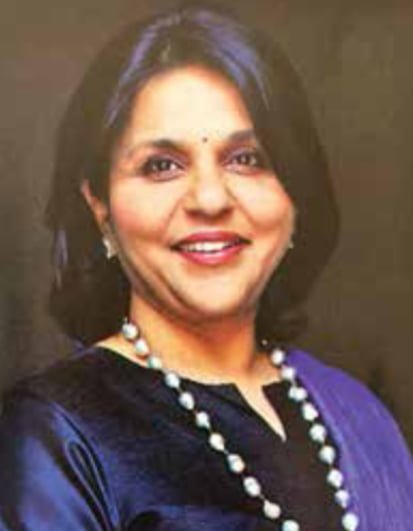India: food bowl for the world
President FICCI Dr Sangita Reddy has called for a vigorous push to economic growth agenda, citing green shoots of recovery.
“It’s clearly time for bold actions on the livelihood front. The recent monetary policy assures that the government and the regulator will do everything it takes to keep the economy afloat. Let us start pushing our growth agenda vigorously,” said Dr Reddy on 1 Nov 2020.
“We can see the initial green shoots of recovery have begun,” she added.
The PMI for Manufacturing and Services has recovered to 56.8 and 49.8, respectively, in September 2020. There has been a pick-up in e-way bill volumes, improvement in revenue earning freight traffic of major commodities, positive-growth in exports and the most significant increase in the September GST collections to almost pre-COVID-19 level.
“These incremental trends are heartening and need to be sustained. Further initiatives like the consumption vouchers (which was another one of FICCI’s recommendations) must continue to remain focused on demand generation,” Dr Reddy stressed.
India’s inherent economic strengths and resilience remain intact. Given the progressive policies introduced by the government, major infrastructure development plans in place, large consumer market, all point towards significant headroom for growth.
“Also significant are vibrancy of our entrepreneurs who are always able to spot an opportunity and move proactively, the capabilities and diligence of our working class, the commitment of our farmers and energy of our youthful population that seeks a better future, India is capable to bounce back and emerge stronger from this crisis,” she noted.
Reddy highlights facts that augur well for the country’s long-term potential:
First is the agriculture sector strength which has performed well even in this difficult period of COVID-19 pandemic. India can emerge as the food bowl for the world. “By multiplying the farmer producer organisations and giving them adequate support, we can achieve good results both for farmers and consumers.”
The target of doubling farmer’s income was boosted by the recent marketing reform undertaken. Nearly 33% of the increase in income is attainable through better price realization and efficient post-harvest management. This along with the agri-export target of US$60 billion by 2022 bodes well for the farm sector.
Second is advanced manufacturing in areas of pharmaceuticals, electronics, defence, aviation, robotics etc. where the skills of a trained workforce can be made future ready. Dedicated clusters and zones that are self-contained, will complete the ecosystem for production. The manufacturing sector has the potential to reach US$1 trillion by 2025.
Third is the versatile services sector that has innovated and learnt to work from home through the COVID-19 period. The IT sector through their global delivery centres ensured that even during the pandemic, businesses in India and in other parts of the world could continue their operations. Given the growth trajectory, the Indian IT sector could touch US$350 billion by 2025 and Business Process Management is expected to account for US$50-$55 billion of the total revenue.
Fourth is the infrastructure sector. Today, some of the largest projects globally in the infrastructure area are being conceived and implemented in India. The new National Infrastructure Pipeline, which entails an investment of over US$1 trillion between now and 2025, presents an ambitious plan and with a good mix of public and private funding. This mega investment in projects will boost over 200 sectors connected to infrastructure.
Fifth is the country’s MSME sector and startups that are spawning innovation and is another growth flywheel in the Indian growth engine.
Sixth is the pervasive, multi-sectoral digital push. COVID-19 has provided a ballast to digitalization across areas. “As we aim for a US$5 trillion economy, digital is poised to contribute US$1 trillion of this.” The Government has already laid the foundation for unlocking value in AI, ML, IoT and allied technologies.
Seventh is the work being done to promote the 27 identified champion sectors. The government along with the industry is ideating and examining every detail of the ecosystem for these sectors and already major changes have been put into motion that will show results in the near to medium term. The government is also moving fast on developing industrial corridors.
New and innovative policy frameworks are being put in place to boost the industrial economy. Production linked incentive scheme is one such framework. Additionally, some State Governments have announced special incentive and subsidy plans to attract investments. “This 360-degree approach will prove to be an effective catalyst for our manufacturing sector, and we expect a major boost in exports.”
Eighth is reforms being undertaken to bring down the cost of doing business. Be it the through changes in the Electricity Act or codification of the labour laws or digitization of processes for interface with the government or judicial reforms, each of these reforms has the potential to step up growth and help Indian industry become competitive. “We expect the government to push through with such changes at a quick pace.”
Ninth is the size of the domestic market and propulsion this can provide to many sectors. India’s retail market is estimated to be US$1.1-1.3 trillion by 2025, up from US$0.7 trillion in 2019, growing at a CAGR of 9-11%. India will be amongst the largest consumer bases in the world and hence will always be a market that nobody can afford to ignore.
Tenth, the healthcare and education sectors are growing rapidly and can be a good source of growth going ahead. While the Indian healthcare sector is expected to reach US$372 billion by 2022, higher education sector growth is expected to reach US$35 billion by 2025. A multi-pronged approach of ramping domestic capability, creating global footprints in these areas would be a transformational strategy for the social sector.
“Through our endeavours, we can win the war against COVID-19 pandemic and emerge stronger,” said the FICCI President.
The numbers are beginning to show the early results of a careful orchestration that is happening. “Let us positively channelize our collective energies and talents.”
About 1.4 billion people from all walks of life, race and religion are bound together as a nation, which is poised to have a positive future. No one should doubt that.
“The next decade will be India’s decade and together we must architect this powerful destiny,” stressed Dr Reddy. #economy #exports #investments #manufacturings #projects #technology #agriculture /fiinews.com











